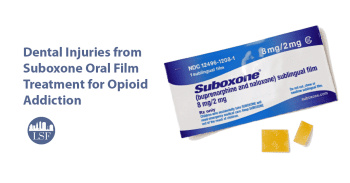Are you curious about what schedule drug is Suboxone? Suboxone is a medication used to treat opioid addiction by reducing withdrawal symptoms and cravings. Understanding its classification is essential for both patients and healthcare professionals. Suboxone contains buprenorphine, a partial opioid agonist, and naloxone, an opioid antagonist, making it a valuable tool in medication-assisted treatment programs. In the United States, drugs are categorized into different schedules based on their potential for abuse and medical use. By delving into the classification of Suboxone, we can gain insights into its legal status, prescribing regulations, and overall impact on addiction treatment. Let’s explore the intricate details of what schedule drug is Suboxone and its significance in combating opioid dependency.
Introduction to Suboxone
Suboxone is a medication used in the treatment of opioid addiction. It is a combination of two active ingredients: buprenorphine and naloxone. Buprenorphine is a partial opioid agonist that helps reduce cravings and withdrawal symptoms, while naloxone helps prevent misuse. Suboxone is commonly prescribed as part of a comprehensive treatment plan for individuals struggling with opioid dependence.
Benefits of Suboxone
Suboxone helps individuals manage their addiction by reducing withdrawal symptoms and cravings. Its combination of buprenorphine and naloxone provides a balanced approach to opioid addiction treatment.
Usage and Dosage
Suboxone is typically administered as a sublingual film or tablet. The dosage may vary depending on the individual’s needs and medical history. It is important to follow the prescribed instructions carefully to ensure effective treatment.
- Suboxone should be taken exactly as prescribed by a healthcare provider.
- Regular monitoring and adjustments to the dosage may be necessary during the treatment process.

Understanding Drug Scheduling
Drug scheduling is a classification system used to regulate and control the manufacturing, distribution, and use of certain medications based on their potential for abuse and medical value. One of the frequently asked questions in this context is what schedule drug is Suboxone. Suboxone is categorized as a Schedule III controlled substance under the Controlled Substances Act.
Schedule III Classification
Schedule III substances have a moderate to low potential for physical and psychological dependence compared to Schedule I and II drugs. Suboxone, which consists of buprenorphine and naloxone, is used in the treatment of opioid addiction due to its partial opioid agonist properties (active year is 2022).
Regulations and Prescriptions
In the United States, Schedule III drugs like Suboxone require a prescription from a healthcare provider, and there are restrictions on refills to prevent misuse. Patients must follow strict guidelines for its use to avoid adverse effects or dependency issues.

Explanation of Suboxone’s Drug Schedule
Suboxone is classified as a Schedule III controlled substance in the United States. This classification is based on the drug’s potential for abuse and dependence but to a lesser extent compared to Schedule I and II drugs.
Criteria for Schedule III classification
Schedule III substances have a moderate to low potential for physical and psychological dependence. They are currently accepted for medical use, making them available by prescription, but still require caution in their use due to the potential for abuse.
Regulations for Schedule III drugs
Schedule III drugs like Suboxone have regulations regarding their distribution and prescribing practices. These regulations help prevent misuse and ensure that these medications are used safely and effectively in treating opioid dependence.
Comparison with Other Controlled Substances
When considering what schedule drug is Suboxone, it falls under Schedule III controlled substances in the United States. This places it in a category with other drugs that have a moderate to low potential for physical and psychological dependence compared to Schedule I and II drugs.
Differences in Regulations
Suboxone, being a Schedule III drug, has less stringent regulations compared to Schedule I and II substances such as heroin or methamphetamine. This allows for easier prescribing and dispensing under medical supervision.
Addiction Potential
While Suboxone still carries a risk of dependence, its categorization as a Schedule III drug implies a lower risk of addiction compared to substances in higher schedules. Monitoring is still crucial to prevent misuse.
Impact of Drug Scheduling on Access and Regulation
Drug scheduling plays a crucial role in determining the accessibility and regulation of medications like Suboxone. As a Schedule III controlled substance, Suboxone has restrictions on its distribution and use, striking a balance between medical benefits and potential abuse risks.
Access to Suboxone
Individuals seeking Suboxone treatment must navigate through specific prescribing requirements due to its scheduling. This can impact the ease with which patients can obtain this medication, potentially affecting their journey towards recovery.
Regulation Considerations
Regulatory bodies monitor the prescribing and dispensing of Schedule III substances like Suboxone to prevent misuse and diversion. These regulations ensure that Suboxone is used appropriately in addiction treatment programs to maximize its benefits.
- Tracking of Prescription Patterns
- Physician Training and Certification
- Monitoring of Patient Progress and Compliance
Benefits and Drawbacks of Suboxone’s Classification
Suboxone, classified as a Schedule III controlled substance, provides a blend of benefits and drawbacks in its classification. One advantage is its relatively lower potential for abuse compared to Schedule II drugs due to its partial opioid agonist properties.
Benefits:
Suboxone offers a safer alternative for opioid dependence treatment, reducing the risk of misuse and addiction. Its Schedule III classification allows for easier access for patients in need, under proper medical supervision.
Moreover, its combination of buprenorphine and naloxone helps manage withdrawal symptoms effectively, supporting individuals in their journey towards recovery.
Drawbacks:
Despite its benefits, Suboxone’s Schedule III status can pose challenges in terms of restrictions on prescription refills and physician oversight required for maintenance treatment. This can sometimes lead to logistical hurdles for patients.
Additionally, the classification may create a stigma surrounding its use, causing some individuals to hesitate seeking treatment or facing judgment from others.
Future Trends in Drug Scheduling for Suboxone
As of the latest data of the current year, there have been ongoing discussions and considerations regarding potential future trends in the drug scheduling for Suboxone.
The Growing Importance of Accessible Treatment Options
With the increasing recognition of the opioid crisis, there is a growing emphasis on expanding access to medications like Suboxone for individuals struggling with opioid addiction.
Incorporating Suboxone into different healthcare settings is becoming a priority to ensure comprehensive care.
Innovations in Formulations and Delivery Methods
Researchers and pharmaceutical companies are continuously working on developing new formulations and delivery methods for Suboxone.
Advancements such as long-acting injectable formulations are being explored to improve treatment adherence.
- Sublingual Films
- Extended-Release Implants
- Transdermal Patches
Frequently Asked Questions
- What schedule drug is Suboxone?
- Suboxone is classified as a Schedule III controlled substance according to the Drug Enforcement Administration (DEA).
- What does Schedule III mean in terms of drug classification?
- Schedule III drugs or substances have a moderate to low potential for physical and psychological dependence when compared to Schedule I and II drugs.
- Is Suboxone legal to use?
- Suboxone is legal to use when prescribed by a healthcare provider for the treatment of opioid dependence or addiction.
- Is Suboxone safe to use?
- Suboxone can be safe to use when taken as prescribed by a healthcare provider. It is important to follow the recommended dosage and usage instructions.
- What are some common side effects of Suboxone?
- Common side effects of Suboxone may include nausea, headache, sweating, insomnia, constipation, and mild withdrawal symptoms.
Final Thoughts
In conclusion, Suboxone is classified as a Schedule III controlled substance by the DEA due to its potential for moderate to low physical dependence or high psychological dependence. This classification indicates that while Suboxone has known medical uses in treating opioid addiction, there is still a risk of abuse and misuse that requires monitoring. Understanding the schedule of a drug like Suboxone is crucial for healthcare providers, patients, and regulatory bodies to ensure safe and effective use. By knowing that Suboxone falls under Schedule III, individuals can approach its use with awareness and caution, ultimately benefiting from its therapeutic effects while minimizing risks.
